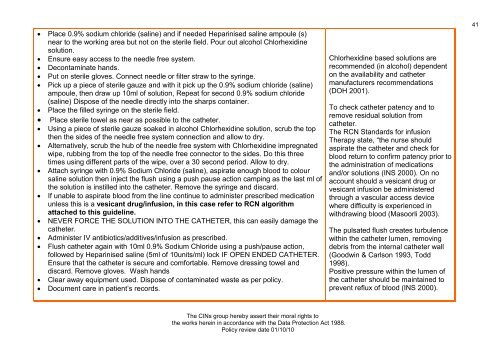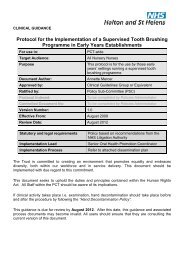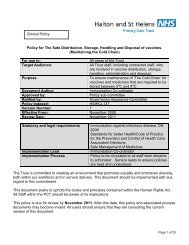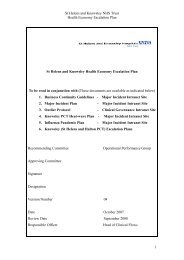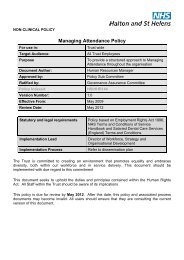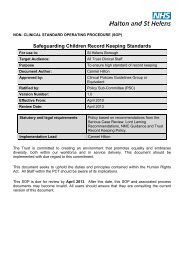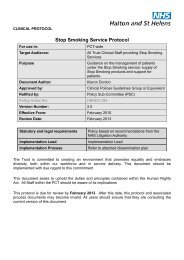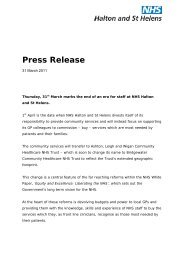Collaborative Intravenous Nursing Service (CINS) Guidelines
Collaborative Intravenous Nursing Service (CINS) Guidelines
Collaborative Intravenous Nursing Service (CINS) Guidelines
- No tags were found...
Create successful ePaper yourself
Turn your PDF publications into a flip-book with our unique Google optimized e-Paper software.
• Place 0.9% sodium chloride (saline) and if needed Heparinised saline ampoule (s)near to the working area but not on the sterile field. Pour out alcohol Chlorhexidinesolution.• Ensure easy access to the needle free system.• Decontaminate hands.• Put on sterile gloves. Connect needle or filter straw to the syringe.• Pick up a piece of sterile gauze and with it pick up the 0.9% sodium chloride (saline)ampoule, then draw up 10ml of solution, Repeat for second 0.9% sodium chloride(saline) Dispose of the needle directly into the sharps container.• Place the filled syringe on the sterile field.• Place sterile towel as near as possible to the catheter.• Using a piece of sterile gauze soaked in alcohol Chlorhexidine solution, scrub the topthen the sides of the needle free system connection and allow to dry.• Alternatively, scrub the hub of the needle free system with Chlorhexidine impregnatedwipe, rubbing from the top of the needle free connector to the sides. Do this threetimes using different parts of the wipe, over a 30 second period. Allow to dry.• Attach syringe with 0.9% Sodium Chloride (saline), aspirate enough blood to coloursaline solution then inject the flush using a push pause action camping as the last ml ofthe solution is instilled into the catheter. Remove the syringe and discard.• If unable to aspirate blood from the line continue to administer prescribed medicationunless this is a vesicant drug/infusion, in this case refer to RCN algorithmattached to this guideline.• NEVER FORCE THE SOLUTION INTO THE CATHETER, this can easily damage thecatheter.• Administer IV antibiotics/additives/infusion as prescribed.• Flush catheter again with 10ml 0.9% Sodium Chloride using a push/pause action,followed by Heparinised saline (5ml of 10units/ml) lock IF OPEN ENDED CATHETER.Ensure that the catheter is secure and comfortable. Remove dressing towel anddiscard. Remove gloves. Wash hands• Clear away equipment used. Dispose of contaminated waste as per policy.• Document care in patient’s records.Chlorhexidine based solutions arerecommended (in alcohol) dependenton the availability and cathetermanufacturers recommendations(DOH 2001).To check catheter patency and toremove residual solution fromcatheter.The RCN Standards for infusionTherapy state, “the nurse shouldaspirate the catheter and check forblood return to confirm patency prior tothe administration of medicationsand/or solutions (INS 2000). On noaccount should a vesicant drug orvesicant infusion be administeredthrough a vascular access devicewhere difficulty is experienced inwithdrawing blood (Masoorli 2003).The pulsated flush creates turbulencewithin the catheter lumen, removingdebris from the internal catheter wall(Goodwin & Carlson 1993, Todd1998).Positive pressure within the lumen ofthe catheter should be maintained toprevent reflux of blood (INS 2000).41The CINs group hereby assert their moral rights tothe works herein in accordance with the Data Protection Act 1988.Policy review date 01/10/10


